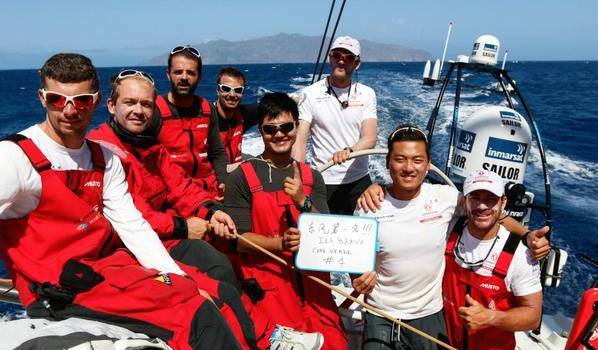Cape Verde Islands create a fork in the road
Published on October 19th, 2014
(October 19, 2014; Day 9) – As the Volvo Ocean Race teams today approached Cape Verde Islands, well known for its proud volcanoes and plunging valleys, it’s fair to say that they’ve had to navigate some peaks and troughs of their own.
Now finally in the northerly trade winds, the fleet’s exit from the African coast had them on starboard gybe, aiming at this Atlantic archipelago.
“The Cape Verde Islands are like a magnet,” explains Team Vestas Wind navigator Wouter Verbraak. “You always get drawn towards them, they are tricky to handle, and if you don’t use the local winds you’ll get burnt.”
With the wind shadows and land affects to contend with, the conservative option is to push west and stay upwind of their influence.
“It’s one of the first big decisions in the race, and it’s one of the first moments that we can’t see the boats,” said Abu Dhabi Ocean Racing navigator Simon Fisher.
While Fisher’s team, along with Team Brunel, Team Alvimedica and Team SCA, had a high enough angle to take the northern, safer route, race leader Dongfeng Race Team would likely have given up their lead to reach up and over the islands.
So instead they gybed to port and went through the middle of the islands, soon tripling their lead. MAPRE and Team Vestas Wind reacted to the move and followed. The photo above shows Dongfeng in front of Ilha Brava, Cape Verde.
The fork in the road has created separation, with the two sides about 100 nm apart, now on converging gybes. While the course to split the islands quickly gained miles for the three teams, they are now all posting slower speeds.
The next concern is getting through the doldrums, with Team Alvimedica reporter Amory Ross noting how the current weather systems may offer more confusion than usual. “The Atlantic weather scene is being dominated by some pretty serious low-pressure systems to the north: an absolute walloping in the UK, and a hurricane off the coast of America. Though thousands of miles away, these storms are stretching much of the wind-generating pressure gradient we would typically use to cross the Equator.”
Leg 1 Position Report (as of 21:40 UTC)
1. Dongfeng Race Team, Charles Caudrelier (FRA), 4500.2 nm Distance to Finish
2. Mapfre, Iker Martinez (ESP), 17.0 nm Distance to Lead
3. Team Vestas Wind, Chris Nicholson (AUS), 18.0 nm DTL
4. Abu Dhabi Ocean Racing, Ian Walker (GBR), 65.0 nm DTL
5. Team Brunel, Bouwe Bekking (NED), 76.0 nm DTL
6. Team Alvimedica, Charlie Enright (USA), 90.0 nm DTL
7. Team SCA, Sam Davies (GBR), 106.0 DTL
Race website – Tracking – Watch log – Videos
Background: The 2014-15 Volvo Ocean Race began Leg 1 on October 11, which takes the 7 teams 6478 nm from Alicante, Spain to Cape Town, South Africa. ETA is Oct. 31 – Nov. 9. Racing the new one design Volvo Ocean 65, teams will be scoring points in 9 offshore legs to determine the overall Volvo Ocean Race winner. Additionally, the teams will compete in 10 In-Port races at each stopover for a separate competition – the Volvo Ocean Race In-Port Series. Final finish on June 27, 2015 in Gothenburg, Sweden.









 We’ll keep your information safe.
We’ll keep your information safe.